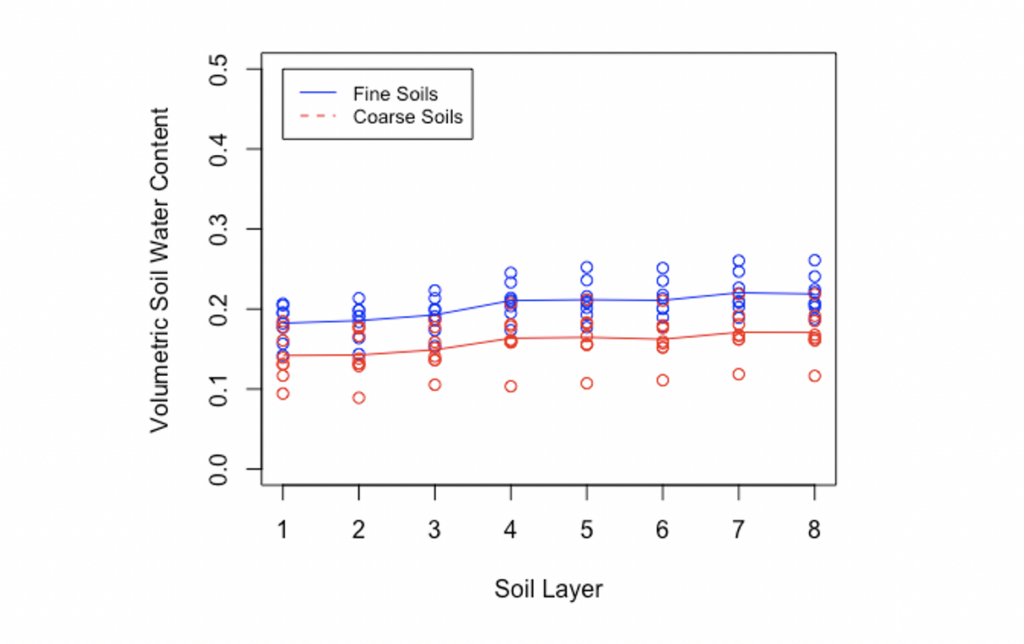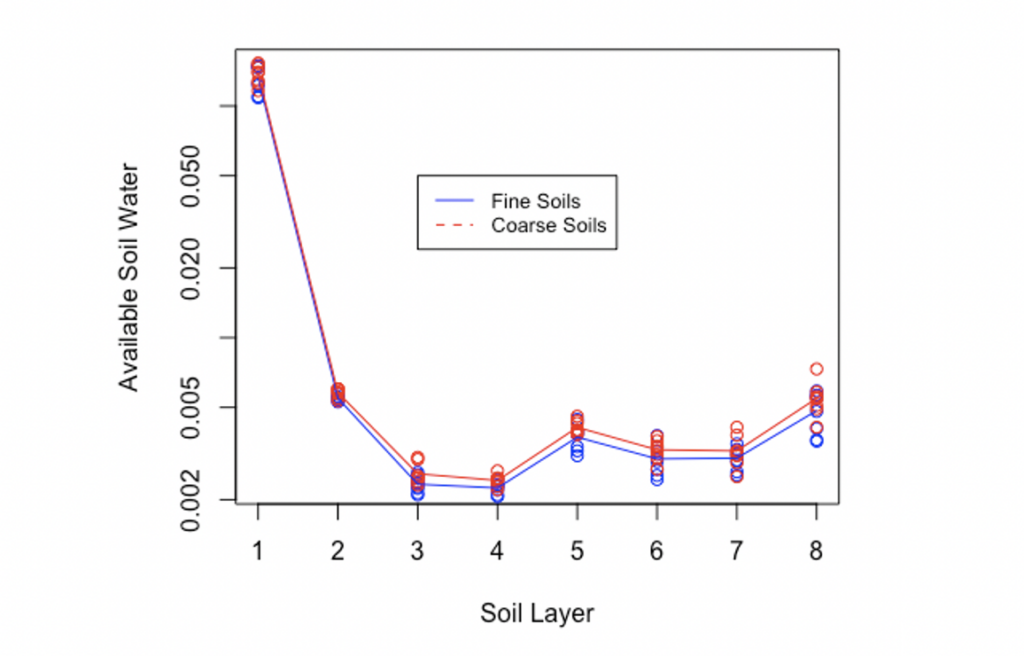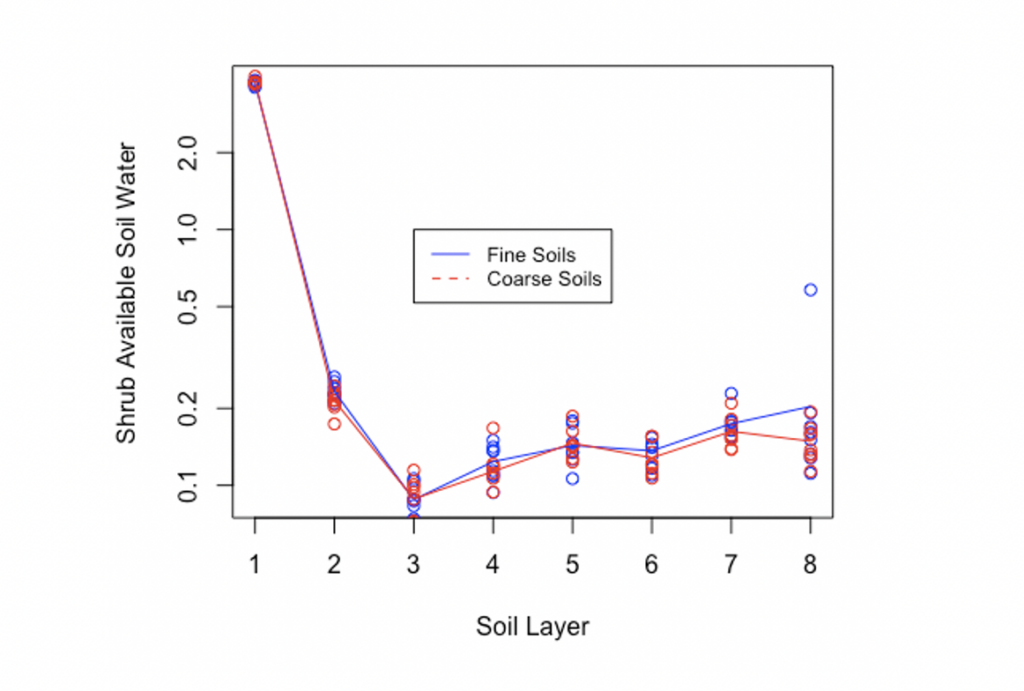This summer, I worked with computer simulations to determine if soil texture was currently an important factor in competition between sagebrush and bunchgrasses. In the present scenario, it was determined to not have a significant effect. Currently, I’m studying how this effect changes as climate change progresses, and it looks like it could start to take hold in the future. However, I wanted to write about my findings so far, or perhaps lack thereof.
On a surface level, I was manipulating the clay composition in the soil to observe how this changed the biomass of sagebrush. Simply put, no correlation was found, after running models for 20 sites of varying soil compositions. At the start of the summer, I decided to do this experiment because I was expecting this correlation to exist, so it was a bit confusing to discover that it wasn’t actually present. That leads to the question, how do you deal with these results, when you have seemingly nothing to report?
I began to reframe my way of looking at the problem, and realized that while these results may be negative, they are still results. There’s no reason that I can’t investigate the reasons that this relationship doesn’t exist, when the things I’ve read and know about this subject state that it should. I began to do an analysis similar to the one I would’ve done, had this relationship existed. I started by looking at the volumetric soil water content for each layer, a simple measure of the water contained in the soil.

This graph indicates that there is a difference in water content between coarse soils, which contain more sand, and fine soils, which contain more clay. The fine soils are able to hold more water, so I hypothesized that this would lead to varying biomasses of sagebrush, depending on if they were on a fine or coarse site. This should be especially true in areas where water is a limiting factor, such as the American West. I continued to look at the characteristics of the soil to see why this would be happening. Next, I looked at the available soil water content, a measure of the water that the plants can actually uptake.

This was more explanatory. Even though there’s more water stored in the fine soils, plants aren’t able to access this water as readily as they’re able to access water in coarse soils. This is due to the matric potential of the soils. When the water is in a finer soil, the intermolecular force between the water and solid is larger than when it is in a coarser soil. This means that in coarse soil it is easier for roots to break this bond and uptake the water than in fine soils. Also, the difference in available soil water between fine and coarse soils is much smaller in the first layer than it is in any others, and this is important because the graph shows that the first layer has by far the most available soil water, making it a particularly important determinant.
Next, I looked at the specific shrub transpiration from each layer, a measure of how much water that is transpired from the leaves of shrubs is taken from each of the soil layers.

So, while I did not detect that soil clay composition had a significant effect on sagebrush biomass, I was able to identify some reasons why this could be occurring, and still draw conclusions from my research. I believe that negative results should not be shunned and shied away from, but should be analyzed to observe where and why mistakes in assumptions were made.

Jon Michel, Land Management Field Practicum Participant and Western Resources Fellow | Jon is an undergraduate at Yale College from Wooster, Ohio, pursuing a B.S. in Environmental Studies. He’s interested in dryland ecosystems as well as the effects of climate change on natural systems, and the role that computer simulations can play in quantifying these effects. In the future, he hopes to work in conservation or environmental management in the West. Jon is an avid skier and hiker in his free time. See what Jon has been up to. | Blog
